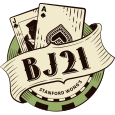

Huck Man,
You asked:
1. How do I calculate expected hourly value in dollars per hour, if the expected player edge is .43% for an eight deck shoe and I am spreading from 1-8 units with $25 base unit?
IF (and that's a big "if") the statement "...the expected player edge is .43%..." is correct, then your hourly EV is calculated by multiplying your edge by the number of rounds per hour and by your average bet.
To illustrate, let's assume you bet $25 on 90% of the rounds and $200 on the other 10%: note that these bets are the "initial wagers": the "player's edge" (or, more properly, the "Initial Bet Advantage" or IBA) accounts for the fact that on some hands you'll split and/or double down.
With these assumptions, your average bet will be
Average Bet = 0.9*($25/round) + 0.1*($200/round) = $42.50/round.
Let's further assume you play 100 rounds per hour (this is the typical assumption, though game speed varies quite a bit, depending on number of players, dealer competence, etc.).
Then, your "Expected Value" (usually abbreviated EV) will be
EV = (0.0043)*($42.50/round)*(100 rounds/hour) = $18.275/hour.
Of course, to calculate this result we had to assume that your IBA is really 0.43%, and that your bet distribution is as specified. Both of these assumptions are, in fact, wrong.
To find the "real" values, we typically resort to simulation. However, I could not simulate your game because three crucial pieces of information were missing:
1. What was the penetration? In other words, when the "cut card" appeared, how many decks had already been dealt? Alternatively, how many decks were remaining to be dealt at that point? 8D games usually have a penetration of about 6.5 decks, though I've seen pens as high as 7+, and as low as 5.
2. What were the house rules? In particular:
2a. With a Soft 17 did the dealer Hit (H17) or Stand (S17)? By the way, a "soft" hand is a hand containing an Ace that can be counted as 11 without busting, so a Soft 17 could be, for example, A-6, A-4-2, or 3-A-2-A, but NOT 9-6-A-A (because in this case, each Ace must count for only 1 to avoid busting).
2b. Also, are you allowed to double down (DD) without restriction (called "DA2" for DD on Any 2 cards)?
2c. Can you DD after splitting ("DAS", for DD After Split)? Can you Surrender (usually "LS" for Late Surrender)?
2d. Can you re-split Aces ("RSA")? (Note that this list is NOT exhaustive: many other rules variations are seen "in the wild".)
3. How many players? Actually, how many spots were being played?
If you give answers to these questions, I (or another helpful poster here) can simulate your game to determine the "real" values for IBA and Average Bet, as well as answer your 2nd question.
Hope this helps!
Dog Hand

Thanks Dog Hand for all of the helpful info. That would be great if you could run a simulation for me!!
Here are the answers to your questions. I really appreciate all the help you are providing. BTW, what software do you use to run these sims?
1. What was the penetration?
6.5 to 7 decks penetration usually.
2. What were the house rules? In particular:
2a. With a Soft 17 did the dealer Hit (H17) or Stand (S17)?
Stay on soft 17.
2b. Also, are you allowed to double down (DD) without restriction (called "DA2" for DD on Any 2 cards)?
Yes, double on any two cards
2c. Can you DD after splitting ("DAS", for DD After Split)?
Yes, DAS.
Can you Surrender (usually "LS" for Late Surrender)?
Yes, LS.
2d. Can you re-split Aces ("RSA")? (Note that this list is NOT exhaustive: many other rules variations are seen "in the wild".)
No RSA.
3. How many players? Actually, how many spots were being played?
6 spots being bet.
Thanks again!
Huck Man,
To answer your query, I used an excellent piece of software named CVCX, which is sold at QFIT.COM. The author of the software, Norm Wattenberger, is extremely knowledgeable about BJ simulation, and I can personally vouch for ALL of his BJ-related programs.
The conditions I simmed were as follows: 8D, S17, DA2, DAS, LS, with a total of 4 spots in play (you & 3 others). The counter used the "KO Preferred" system with a bet schedule of $25 at -7 & below and $200 at -6 & above (with -28 as the IRC).
When the penetration is 6.5/8, these are the results:
Avg. Bet = $64.35, IBA = 0.631%, WR = $40.61, SD/hr = $1100.46, N0 = 73,437, RoR ($25K BR) = 18.7%, P(-$2600, 9 hr) = 18.45%
So, your average bet is over $64: this is because you'll bet $25 on about 77.5% of the rounds, and $200 on the remaining about 22.5%. Your IBA is higher than you said, but you gave the "KO Rookie" value, so KO-P should be better. Note your high Risk of Ruin: if you continue playing like this, you have an 18.7% chance of losing a $25,000 BR (I don't know what your BR is, so I picked a number). Also note that losing $2,600 or more in a 9-hour session (at 100 rounds/hr) is expected to happen 18.45% of the time. In fact, while over 9 hours you'd expect to win $365 (= $40.61/hr * 9 hr), because of the high Standard Deviation (SD/hr = $1,100), you have a these chances of finishing a 9-hour session in the following ranges:
Chance/Range
66.7% -$2,832 to +$3,562
90.0% -$5,066 to +$5,796
99.7% -$9,433 to +$10,163
Think about this for a minute: if two-thirds of the time you finish between -$2,832 and +$3,562, that means one-sixth of the time you'll finish ABOVE +$3,562 ("Woo Hoo! I'm the greatest BJ player ever!!!"), and one-sixth of the time you'll finish BELOW -$2,832 ("I've been cheated!!!").
One way to improve your game would be to use a bet ramp, rather than a bet jump. CVCX proposed this schedule as "optimum":
-6 & below: $25
-5 & -4: $50
-3: $75
-2: $100
-1: $125
0: $175
Above 0: $200
With this ramp, your results would be these:
Avg. Bet = $47.62, IBA = 0.708%, WR = $33.69, SD/hr = $806.12, N0 = 57,242, RoR for $25K BR = 7.5%, P(-$2600 for 9 hr) = 11.50%
If you have any more questions, feel free to ask.
Hope this helps!
Dog Hand
Bj21 uses cookies, this enables us to provide you with a personalised experience. More info

